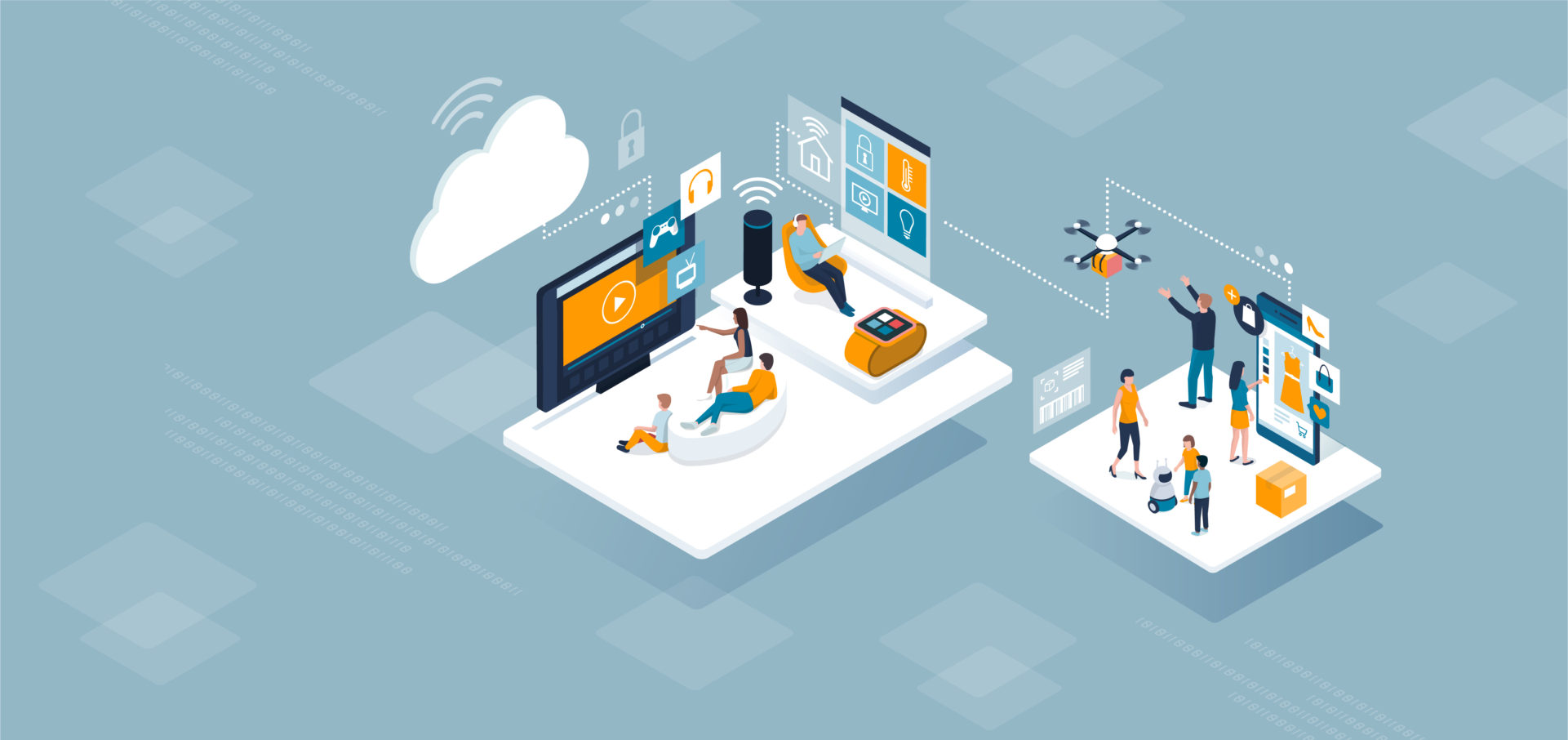How to Survive Amazon’s Ecommerce Jungle

July 16, 2019
With the number of online shoppers in the United States expected to reach 230.5 million in 2021, it’s a jungle out there in the land of ecommerce. Unsurprisingly, the retail site with the most visitors is Amazon, accounting for roughly 50% of the nation’s ecommerce sales and 5% of all combined offline and online sales. As Amazon continues shifting the marketplace with moves like its near 14-billion-dollar acquisition of elite supermarket chain Whole Foods, its plans to transition its standard Prime shipping time from two days to one day and its now 48-hour global retail holiday, Prime Day, the “Amazon Effect” continues.
What is the Amazon Effect?
A vast selection of products, low prices, fast shipping, free returns and the ability to purchase with the push of a button. These are a few of the perks Amazon offers that consumers can’t resist, and retailers can’t keep up with. Pair that with the 101 million Americans that subscribe annually to Amazon Prime’s free same-day to two-day delivery, and you’ve got a collection of individuals captivated by the convenience the ecommerce giant is selling. That’s the Amazon effect. The question is, how can retailers compete?
The Plan
Amazon’s number one Leadership Principle has always been customer obsession. In his 1997 shareholder letter, Amazon CEO Jeff Bezos said, “From the beginning, our focus has been on offering our customers compelling value and maintaining a dogged focus on improving the shopping experience.” Taking a page from Amazon’s book, here are three key ingredients retailers can adopt to improve customer’s shopping experience.
Provide Mobile-Friendly Ecommerce Apps
In this digital age, the inclusion of a mobile-friendly app is invaluable, because it makes it possible for users to shop on the go. Considering that 53.9% of all ecommerce is expected to be generated via mobile by 2021, this is especially important! In order for a retail app to be successful, it needs to maximize the customer’s shopping experience, not complicate it. One way to streamline this process is by making products easy to find, and by creating a checkout process that is fast and simple.
Once a spectacular app is developed, offering push notifications will help maintain attention from shoppers. With 91.1% of Android users and 43.9% of iOS users opting in to push notifications, the chance to draw shoppers back into an app is significantly easy. Optimizing notifications based on relevance and ideal times will also help boost performance and deliver a more personalized experience that shoppers can appreciate.
One app that shoppers are currently appreciating is Walmart’s. The retail giant recently surpassed Starbucks as the most-downloaded mobile pay app this year with 58 million users, according to a recent study. As part of its decision to take its omnichannel efforts to the next level, the Walmart app was revamped to complement shoppers’ in-store buying experience.
One such improvement includes the “Store Assistant” view of the app that shoppers can use when inside a brick-and-mortar location. This added feature allows users to easily locate items, scan prices and read reviews while browsing through the store.
Integrate Artificial Intelligence
You can’t put the wants and needs of the customers at the top of your priority list without fully understanding them. This is where Amazon’s use of artificial intelligence comes into play. Using clustering and classification algorithms, Amazon gathers data about its users and what they like to shop for, and then classifies them into groups to maintain a consistent shopping experience.
Think of the times you were browsing Amazon for a specific item and an array of “related items” sat enticingly below the item you were viewing. By offering those suggested links, Amazon is able to instantly upsell customers without involving an actual human or even a chatbot.
One easy way for ecommerce retailers to integrate this into their own businesses is through A/B testing. This type of split market experimenting allows companies to test which products perform better with certain website visitors. It can also help companies better understand their target audiences and provide them with products that they’re interested in.
Improve Logistics
According to Invesp, a surprising 96% of consumers consider “fast shipping” to mean same-day delivery. While 56% of online consumers between ages 18-34 expect to have this same-day delivery, 61% of consumers are willing to pay more for it.
Many ecommerce retailers are fulfilling this customer request through courier software, which optimizes the drivers’ routes, accounts for potential delivery obstacles and provides real-time updates on the delivery status.
One retailer that’s upping its delivery game is Target. Previously, Target shoppers could only receive same-day delivery through grocery delivery service Shipt’s website and app, but in the spirit of keeping the experience integrated and the customers happy, Target has evolved. Online shoppers can now browse 65,000 items offered for same-day delivery through a dedicated shopping section on the Target website. Fulfillment of these orders is still powered by Shipt, which Target acquired in 2017 for $550 million, but it eliminates the need for customers to interact with this third-party directly. This new addition also allows customers to save money with weekly ad promotions and earn 5% off on items purchased with Target’s REDcard.
The Takeaway
It’s clear that Amazon’s effect on the ecommerce jungle isn’t going away anytime soon, but by providing mobile-friendly apps, integrating artificial intelligence into business practices and improving logistics, retailers can maintain visits to their sites. As retailers utilize these three methods to level up their company offerings, one thing is key. Excellent marketing is needed to showcase excellent new offerings. Same-day shipping? New products? Upgraded app? Your customers won’t know this until you tell them. Let us bring your company’s best to the forefront with our comprehensive marketing services. From branding to media to social, discover our capabilities here.